Thomas Nelson’s KJV Giant Print Center-Column Reference Bible is still the only KJV available in the Premier Collection. It has a classic, verse-by-verse, layout printed with Comfort Print type designed by 2K/Denmark. I reviewed the original in black goatskin, but it’s now available in brown goatskin with raised spine ribs. In this review, I’ll take a look at the brown goatskin and see how it compares to the original. ISBN: 9780785231264, made in China with premium materials.
Thomas Nelson provided this Bible in exchange for an honest review. I was not required to give a positive review, only an honest one. All opinions are my own.
_________________________________________________________
This Bible is available at (includes some affiliate links)
and many local Bible bookstores
_________________________________________________________
Video Review
Cover and Binding
The cover is brown goatskin leather with an edge-lined leather liner. The goatskin has a soft feel and a nice grain. The brown is about a medium shade and it has several shades mixed in to give it some color texture. It’s perimeter stitched and has a small yapp. The front has no writing. The spine has HOLY BIBLE, KING JAMES VERSION, and THOMAS NELSON printed in gold. It has 5 raised spine ribs. They’re large and look elegant.
The leather liner is also brown and matches the goatskin. A gold gilt line traces the perimeter of the liner. I like little touches like this because it adds to the elegance. The text block is Smyth sewn and it has overcast stitching to give it more support for the first and last signature. It has no trouble staying open to any page.
It has 3 3/8″ ribbons: brown, red, and blue. They’re extra long and are cut at an angle. The overall size is 9.75 x 6.75 x 1.4″ and it weighs 2 lbs, 11.5 oz. This size is great for carry, study, reading, preaching, and teaching.
Paper
It includes the premium 36gsm European that’s used in the other Premier Collection Bibles. It does look and feel premium. It’s white in color and it’s highly opaque. It has a smooth texture, but I find this paper easy to grab and turn. The page edges are art-gilt with red under gold.
Typography
The text is set in a verse-by-verse format with references in the center column. The header shows the book name, chapter number, and verse number in the outer margin and a page summary in the inner margin. The footer shows the page number in the center. All of the highlights are printed in a dark red that stands out and gives this Bible an elegant look.
The typeface is the Comfort Print designed by 2K/Denmark for the KJV. It’s a dark black letter that’s highly consistent and easy to read. Supplied words in italics. The text does include footnote and reference keys. They’re large enough to see, but they can be ignored when preaching or teaching, It does not include self-pronouncing text.
It has around 5-6 words per line. The spacing and print quality is great for public reading. Verse numbers are indented making them easy to find. Books start on a new page, which can be used for notes.
References
References and footnotes are placed in the center column. It doesn’t have as many as the NKJV, but there are enough references for basic study. Those for the left column are at the top and those for the right column at the bottom. A lot of pages have a gap in the center. This space can be used for notes. They’re printed in a larger font than most references. This makes them easy to read, and the red highlights make them easier to find.
The footnotes include definition for archaic words or words that have changed in meaning. They also include some definitions of Greek or Hebrew words, including weights and measures. They’re excellent for reading, study, and preaching. I like having them on the page with the text.
Here are some example references to help you compare:
- Genesis 1:1 – Jn 1:1-3, Ac 17:24
- Deuteronomy 6:4 – Dt 4:35, Mk 12:29, Jn 17:3, 1 Cor 8:4, 6
- Isaiah 9:6 – Lk 2:11, Jn 3:16, Mt 28:18, Jd 13:18, Titus 2:13, Eph 2:14
- Matthew 17:20 – Lk 17:6
- Mark 11:23 – Mt 17:20, 21:21, Lk 17:6
- Mark 12:29 – Dt 6:4, 5, Is 44:8, 45:22, 46:9, 1 Cor 8:6
- John 1:1 – 1 Jn 1:1, Rev 19:13, Jn 17:5, 1 Jn 5:20
- John 2:19 – Mt 26:61, 27:40
- Acts 2:38 – Lk 24:47
- 1 John 1:1 – Jn 1:1, 14, 2 Pet 1:16, Lk 24:39, Jn 1:1, 4, 14
Book Introductions
Book introcutions take about half of a page. They include a basic overview of the book, cover the meaning of the book’s name in its original language, discuss the literary style, show what’s unique about the book, etc. Some include more detail than others. Some have information that others don’t include, such as an outline. Most describe the context and setting. They’re well-written and help give insights for study.
Miracles and Parables of Jesus
Miracles and Parables of Jesus are a couple of lists that include 37 miracles and 39 parables of Jesus. They provide a description and references where you can find them in the text.
Reading Plans
In the back is a one-year reading plan with two readings per day for 365 days. It provides the month, day, morning reading, and evening reading. They include morning and evening readings: one from the OT and one from the NT.
Concordance
The concordance is 68 pages and it has three columns per page. This is a medium-sized concordance, which is helpful for basic study and sermon prep. For more serious study you’ll need external tools. Here are a few example entries when the number of references to help you compare:
- Christ – 15
- Christian – 3
- Faith – 94
- Faithful – 38
- Faithfully – 1
- Faithfulness – 4
- Faithless – 3
- God – 54
- Godhead – 3
- Godliness – 8
- Godly – 9
- Praise(n) – 30
- Praise(v) – 12
- Pray – 36
- Prayer – 34
Maps
It includes 7 full-color Zondervan maps printed on 8 thick glossy pages. It does not include a map index. Fortunately, they’re annotated well, making them easy enough to use. They include topography, distance, routes, borders, possible locations of lost places, battles, elevation, cities, and locations for the events of Jesus’ ministry.
Maps include:
- World of the Patriarchs
- Exodus and Conquest of Canaan
- Land of the Twelve Tribes
- Kingdom of David and Solomon
- Jesus’ Ministry
- Paul’s Missionary Journeys
- Jerusalem in the Time of Jesus
Comparisons
Here’s a look at how the new brown goatskin compares with the original in black goatskin and the KJV Preaching Bible.
Premier Collection KJV Giant Print Reference Bible in Black Goatskin
Premier Collection KJV Giant Print Reference Bible in Black Goatskin is identical on the inside. The goatskin has the same look and feel. The brown has a little bit of color variation (on purpose), which gives it some color texture. The other difference is the brown has the raised spine ribs while the black edition does not. The brown also has three colors for ribbons.
KJV Preaching Bible
The Thomas Nelson KJV Preaching Bible is in brown edge-lined calfskin. They have the same ribbons, but the Preaching Bible’s ribbons are much shorter.
Conclusion
This edition is a welcome upgrade to the KJV Premier Collection. The raised hubs look elegant and I’m glad to see the addition of overcast stitching. The brown is gorgeous. I also love the paper and print quality, the upgraded ribbons in three colors, and I’m glad to see the two-color print is still here. If you’re looking for an excellent KJV in goatskin, the KJV Giant Print Reference Bible in brown goatskin is a great choice.
_________________________________________________________
This Bible is available at (includes some affiliate links)
and many local Bible bookstores
_________________________________________________________
Thomas Nelson provided this Bible in exchange for an honest review. I was not required to give a positive review, only an honest one. All opinions are my own.

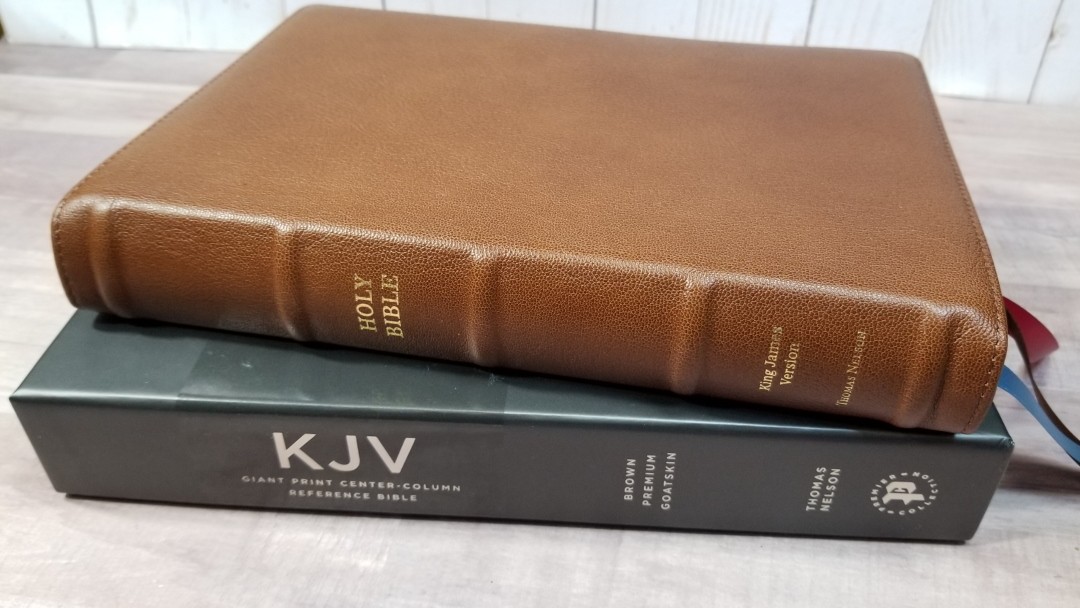
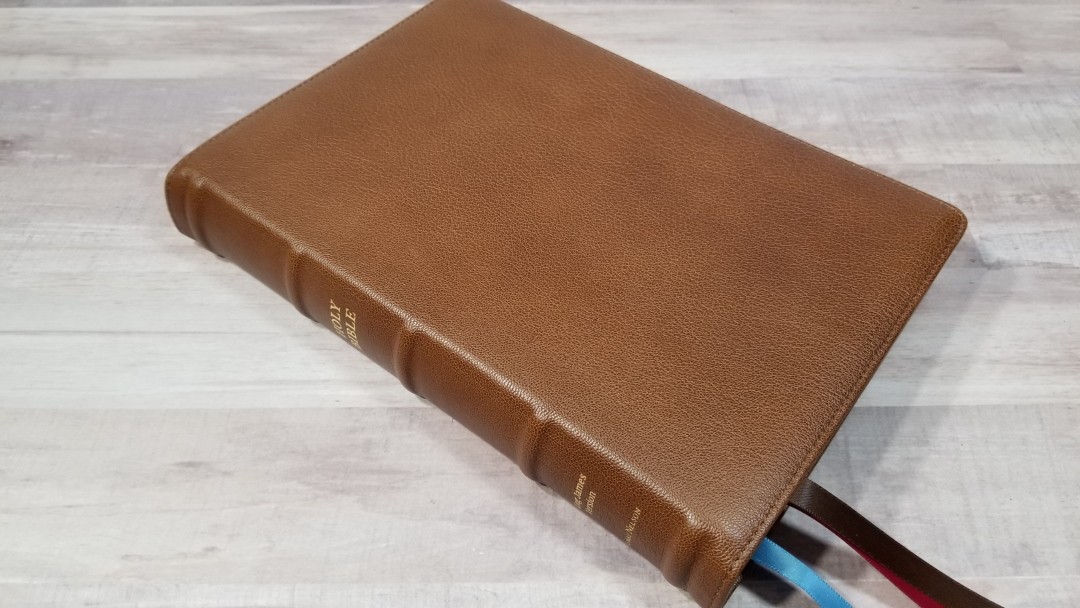
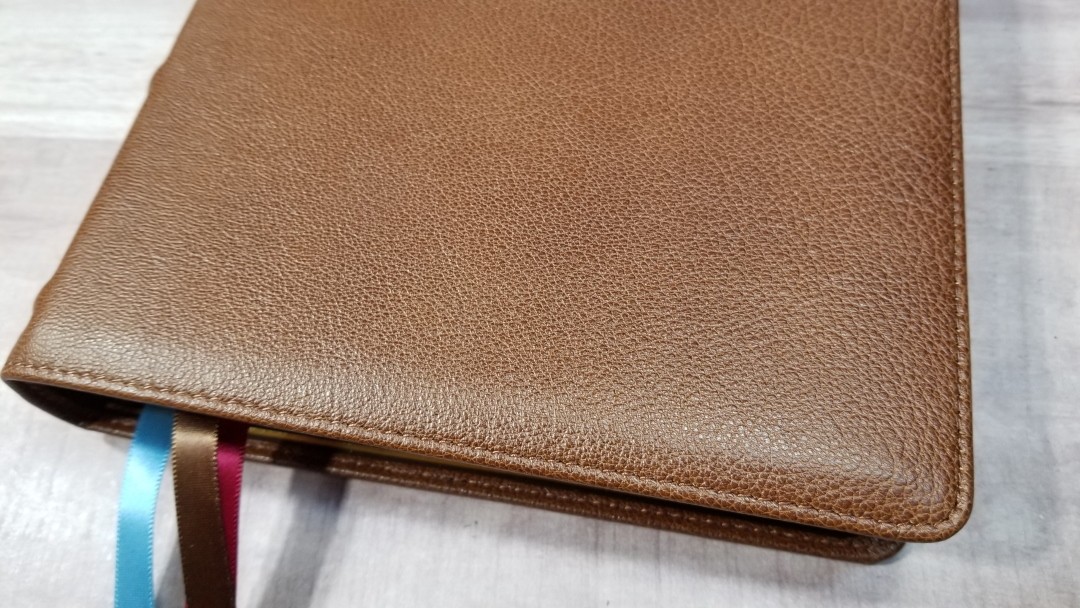

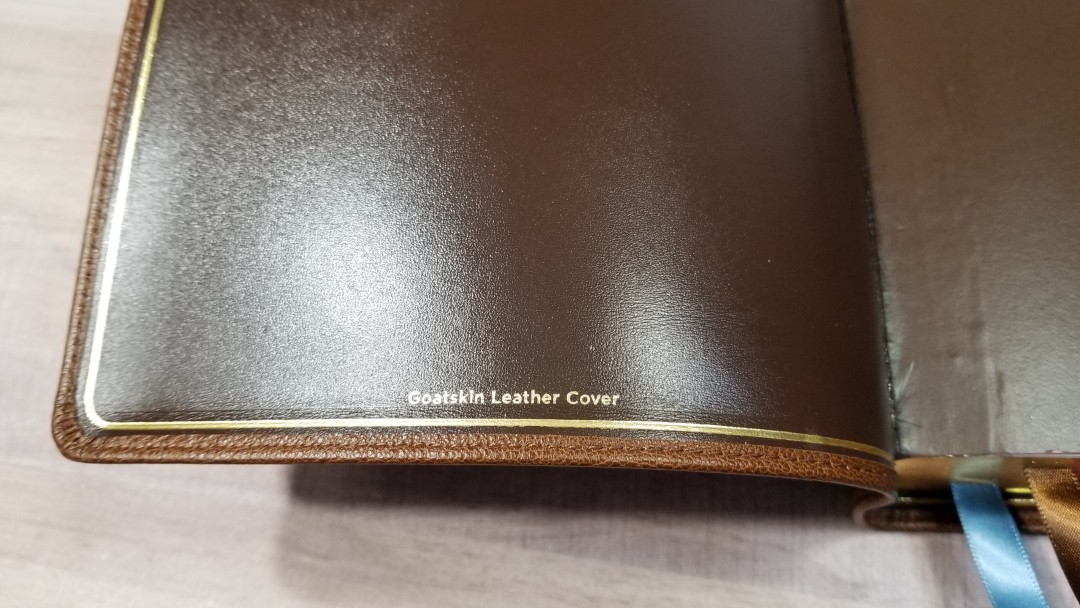
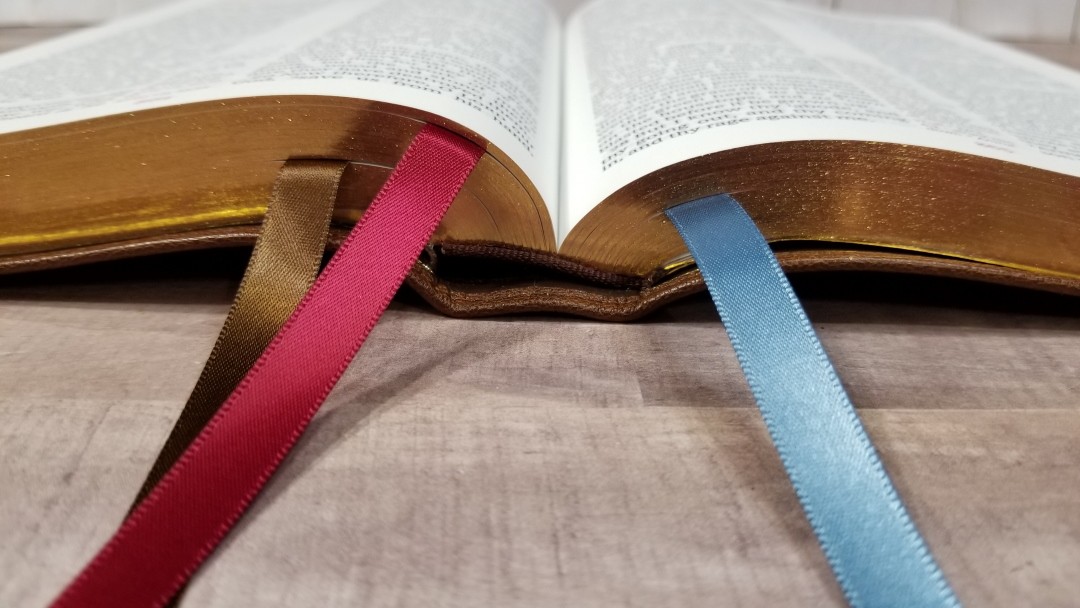
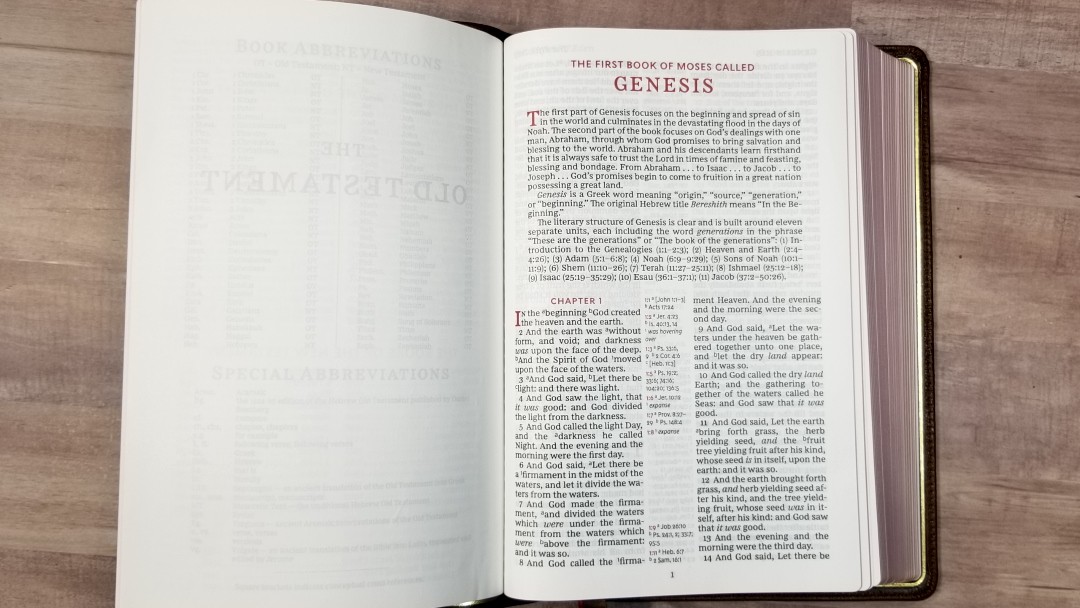
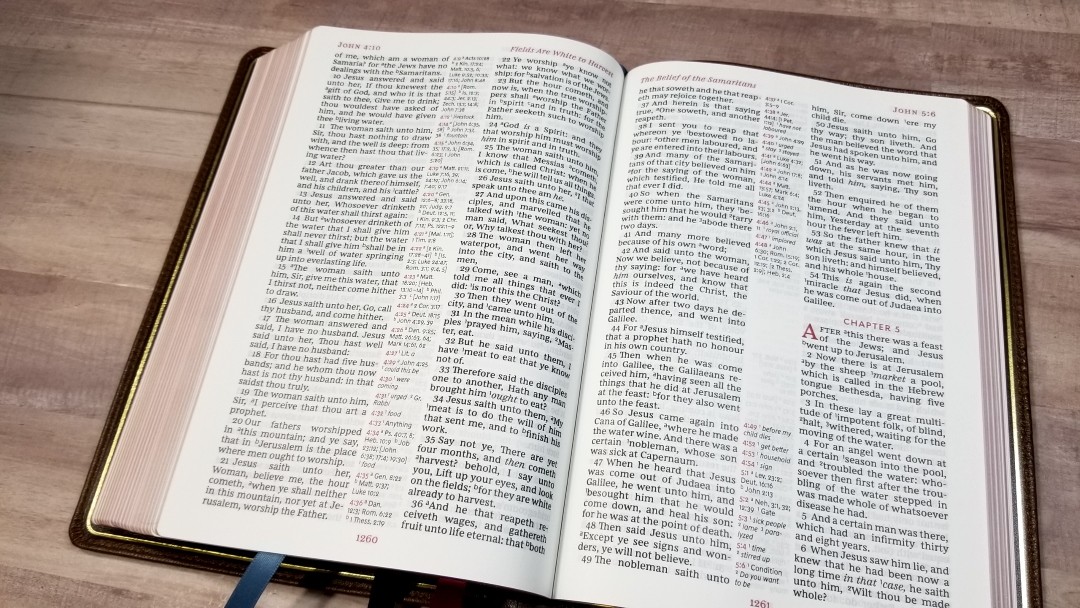
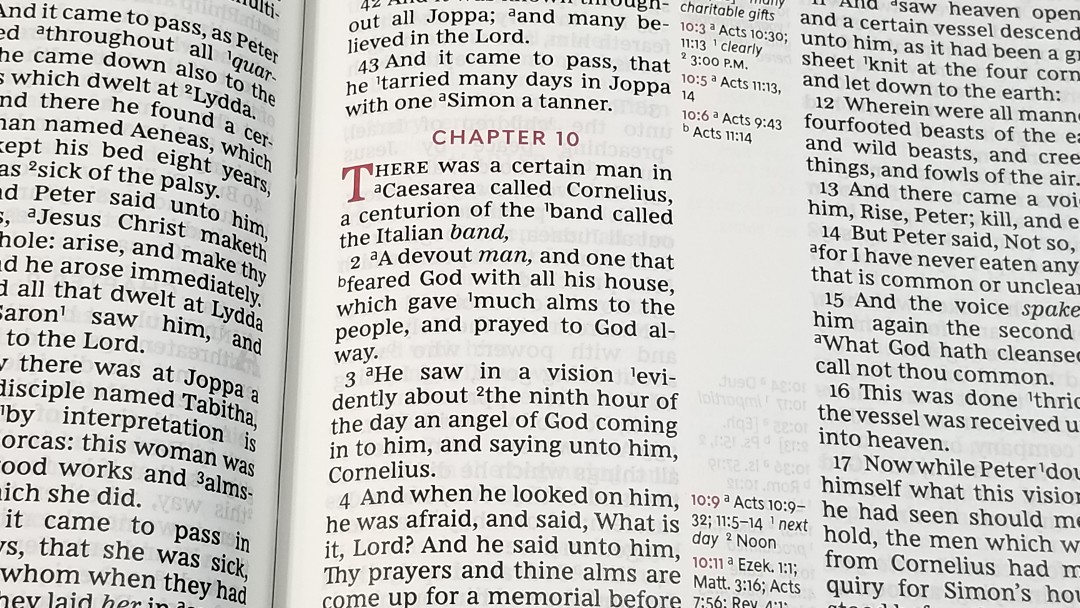
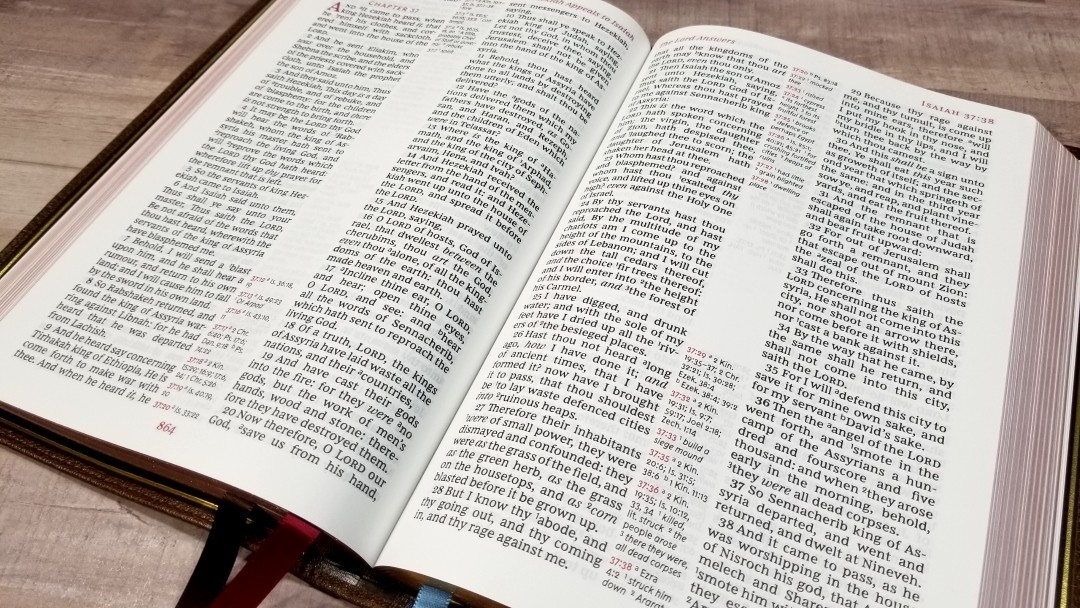

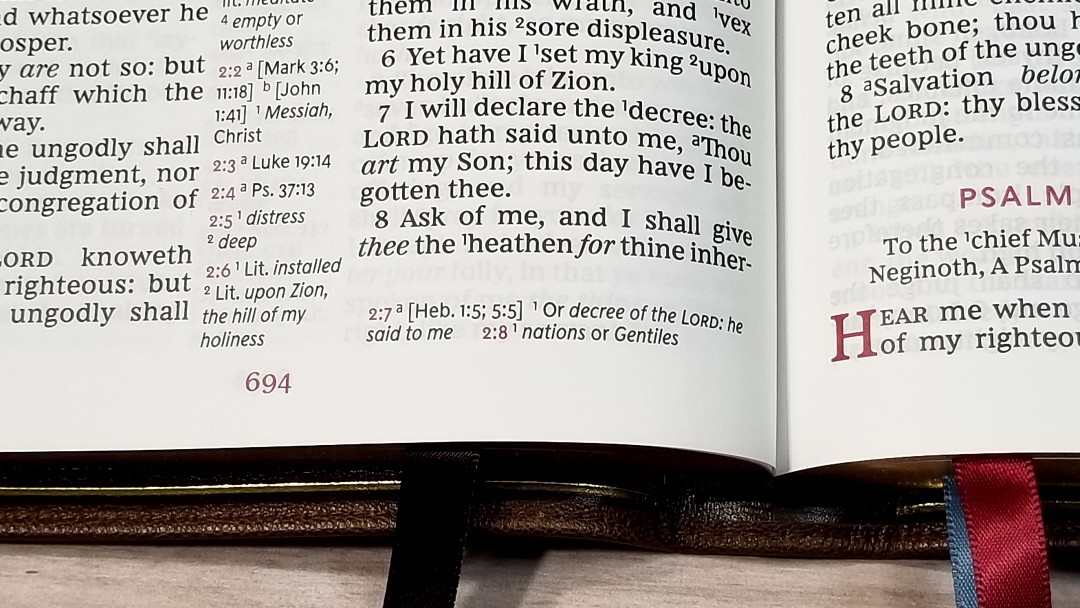
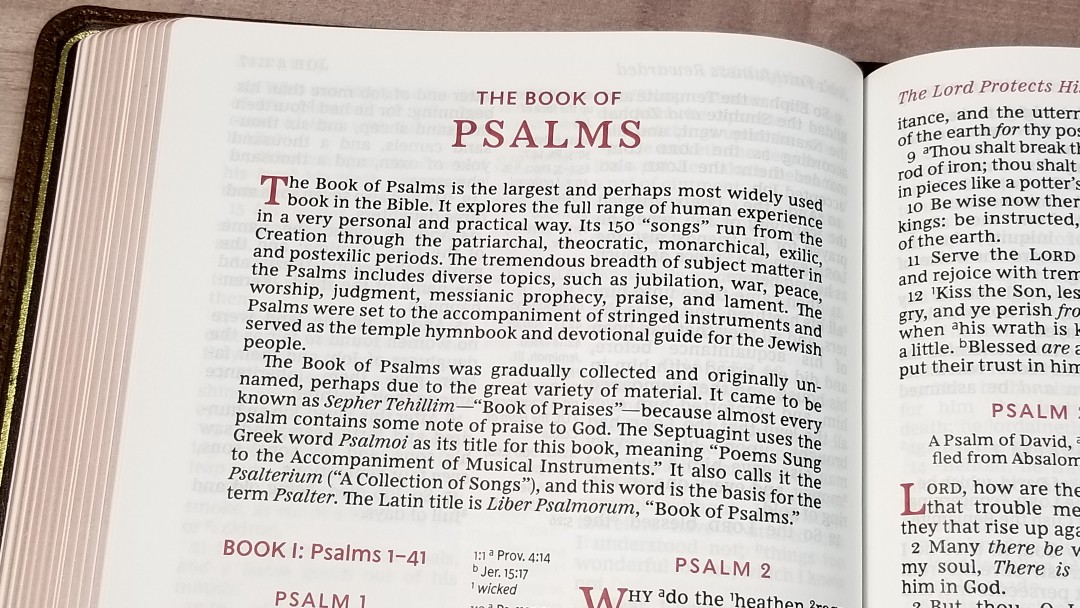
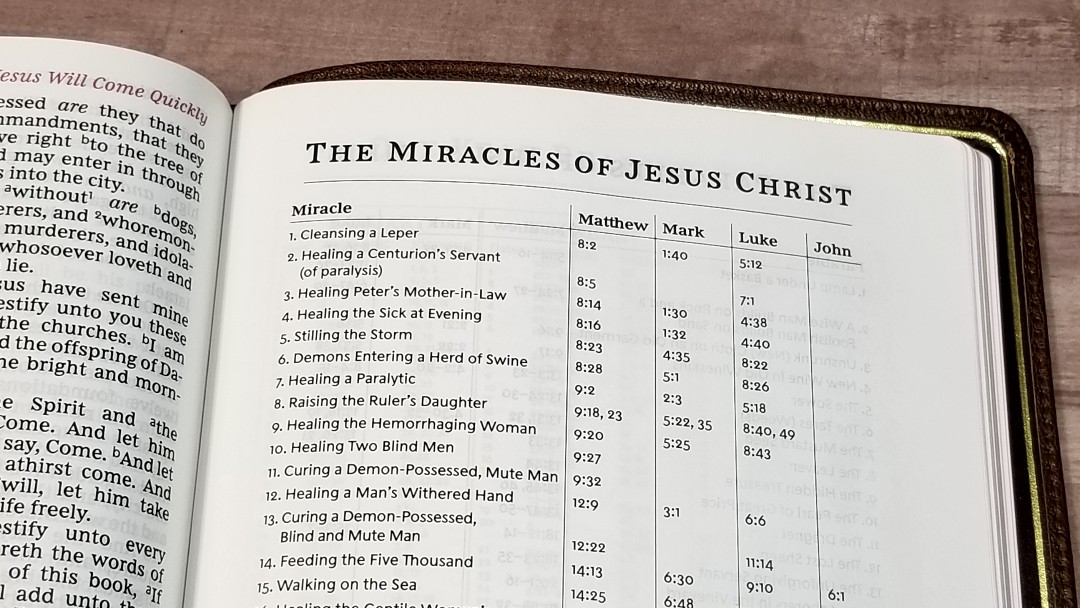

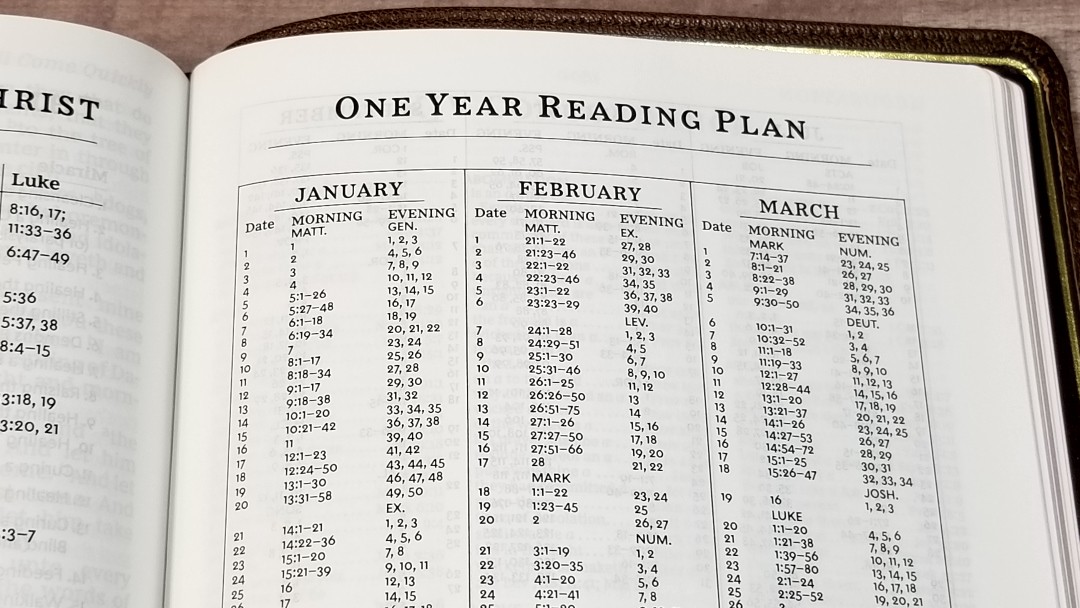
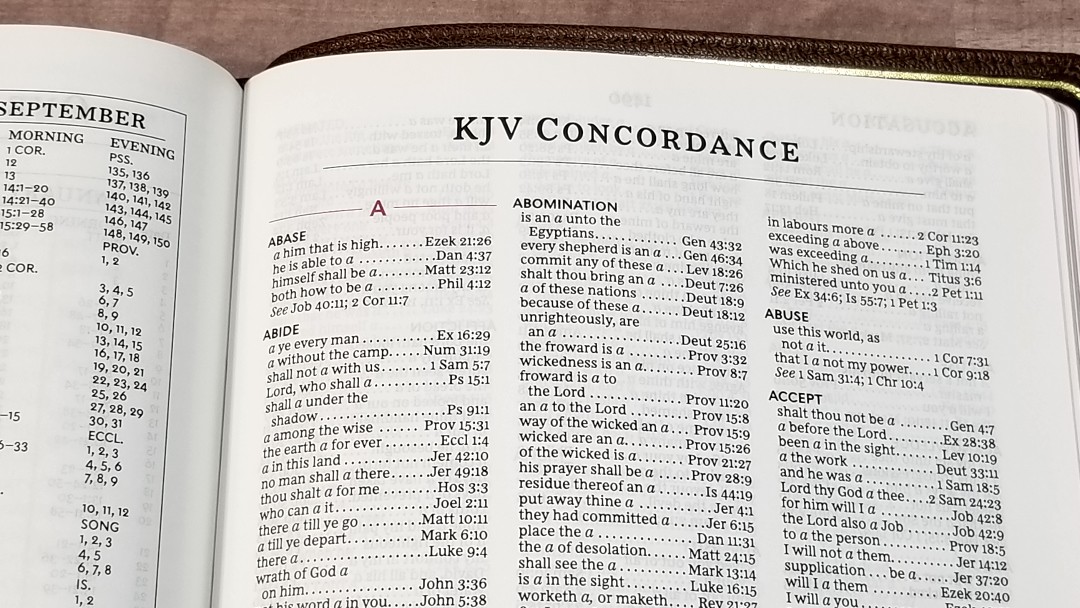
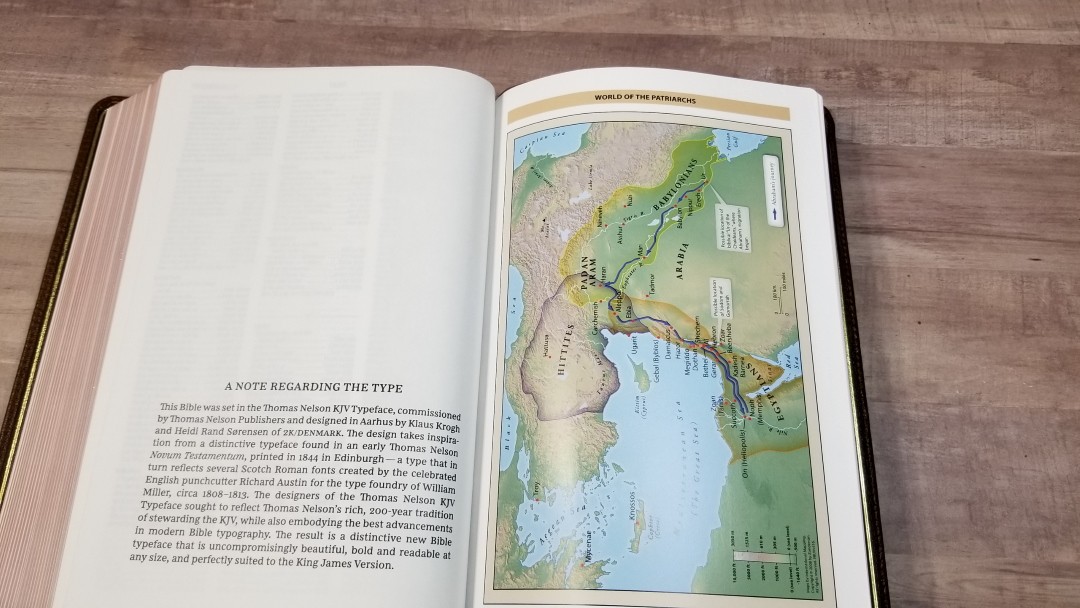
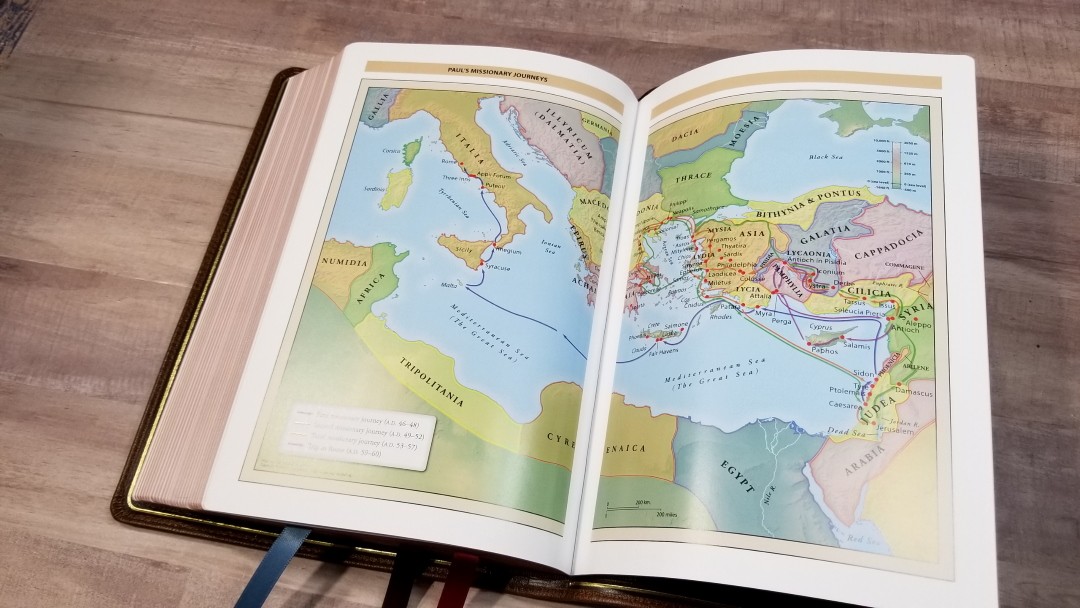
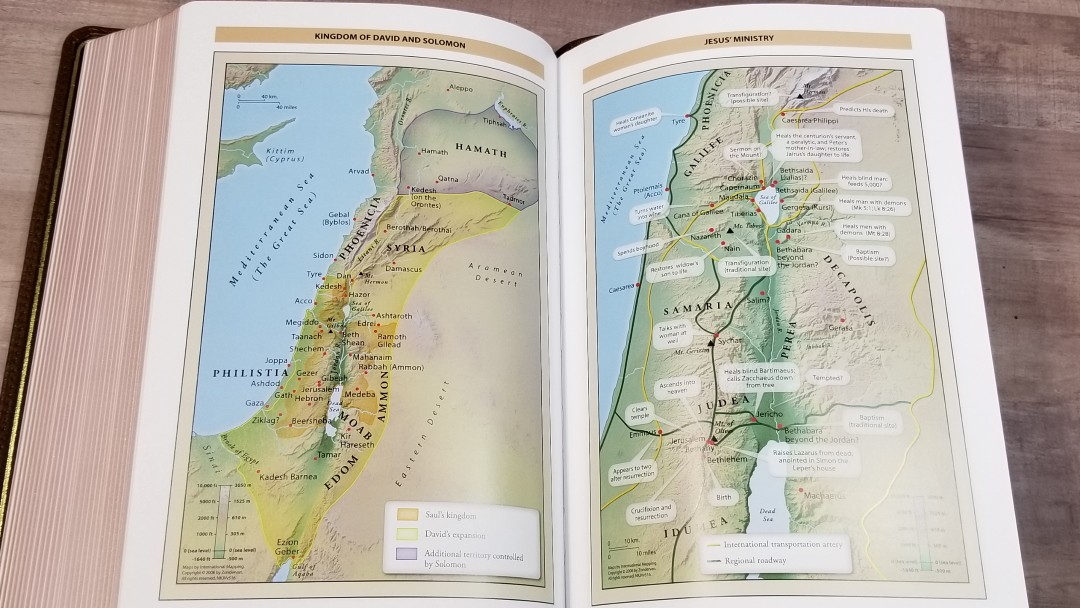
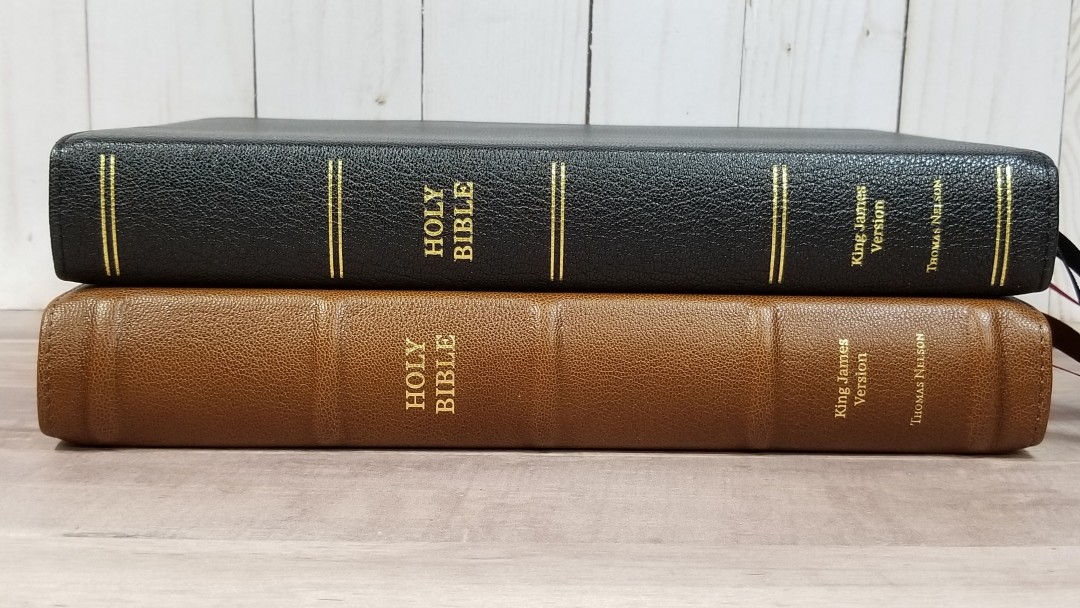
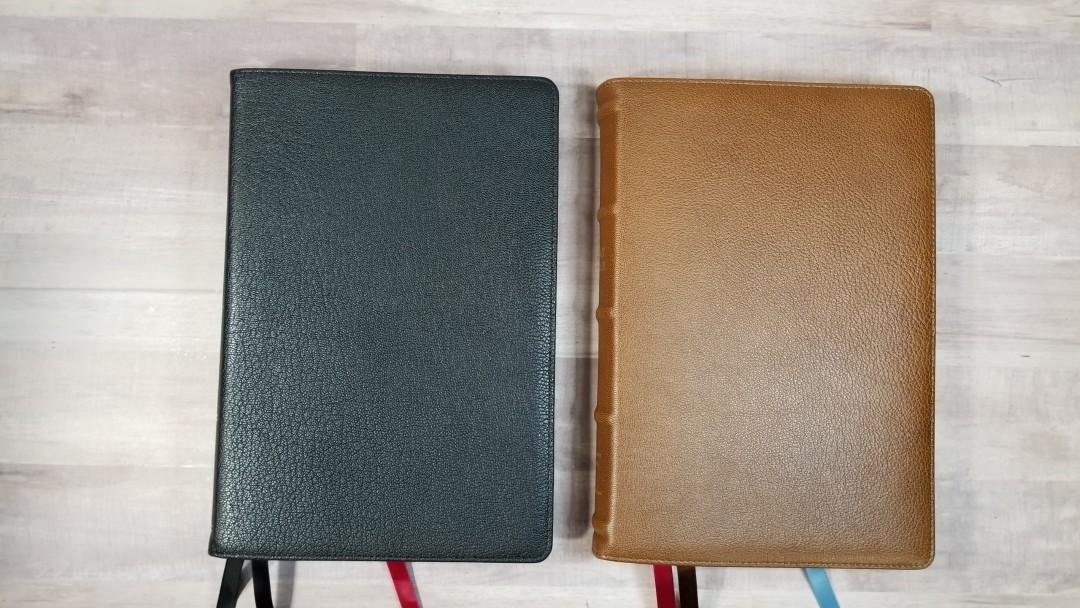
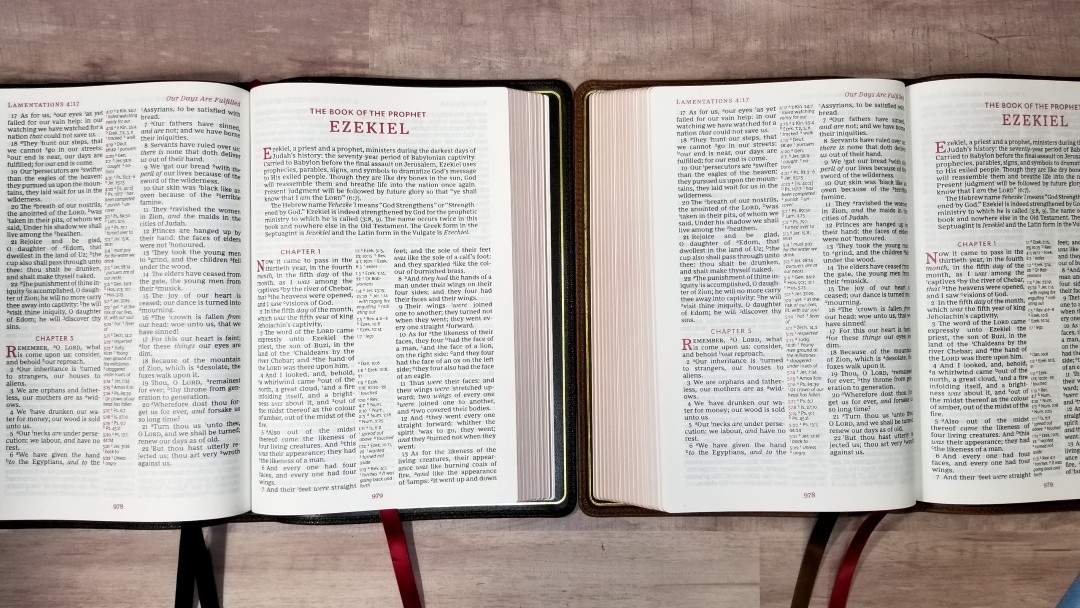

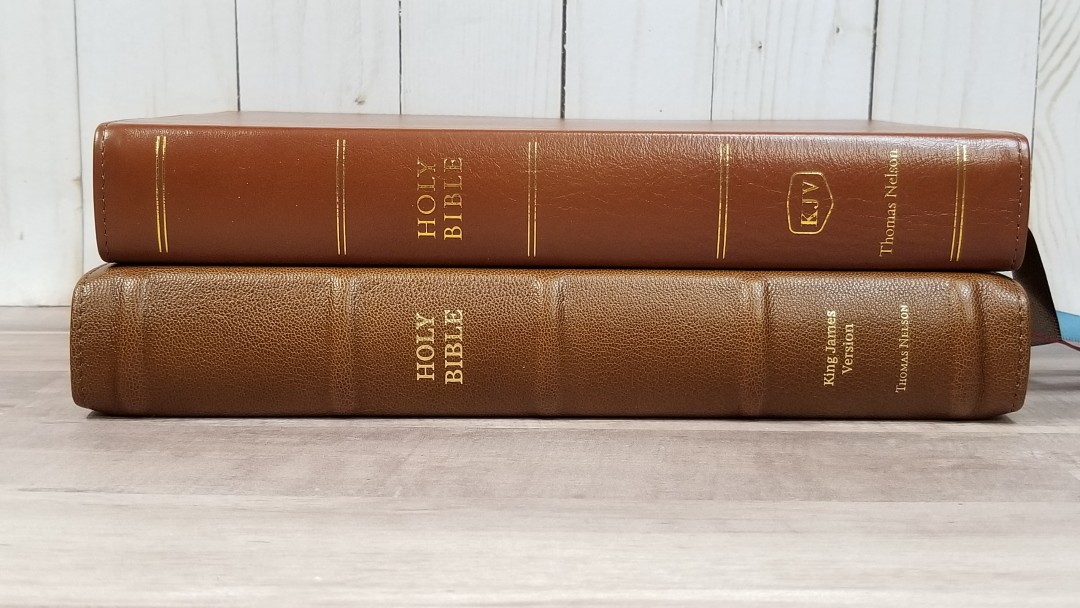
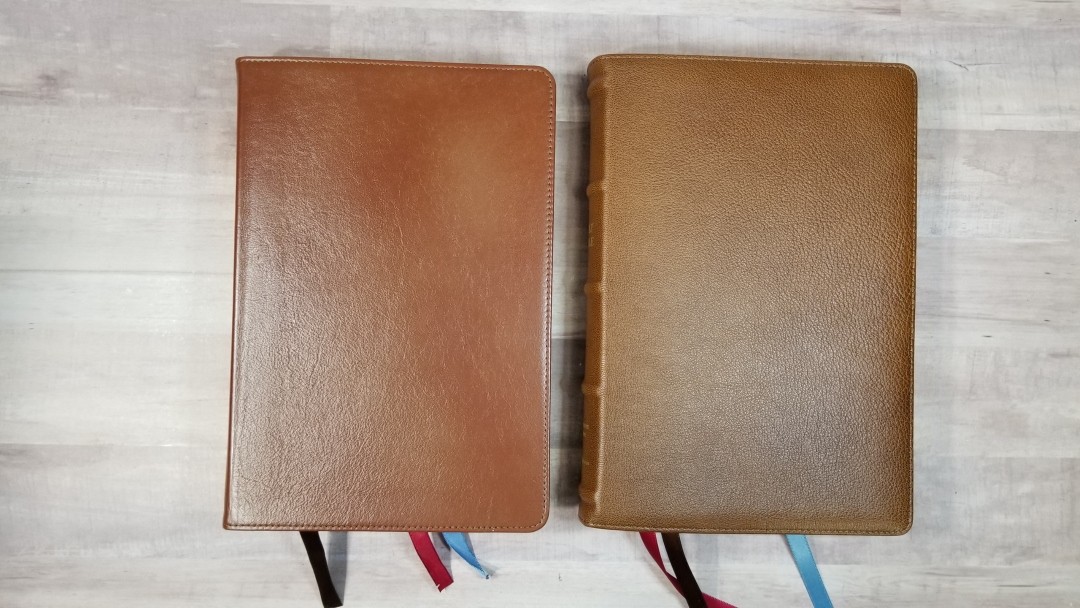
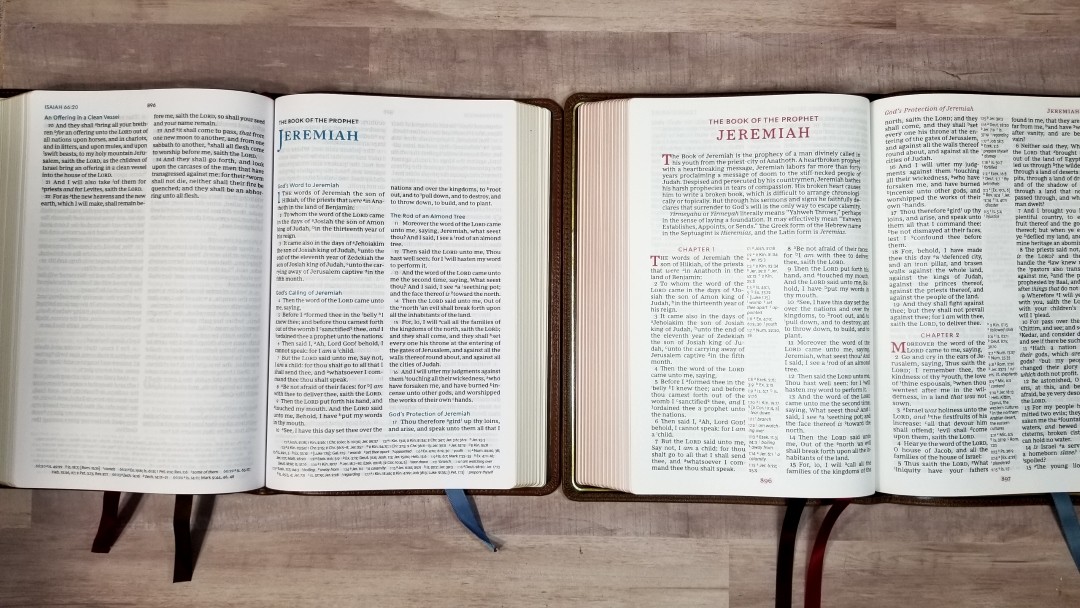
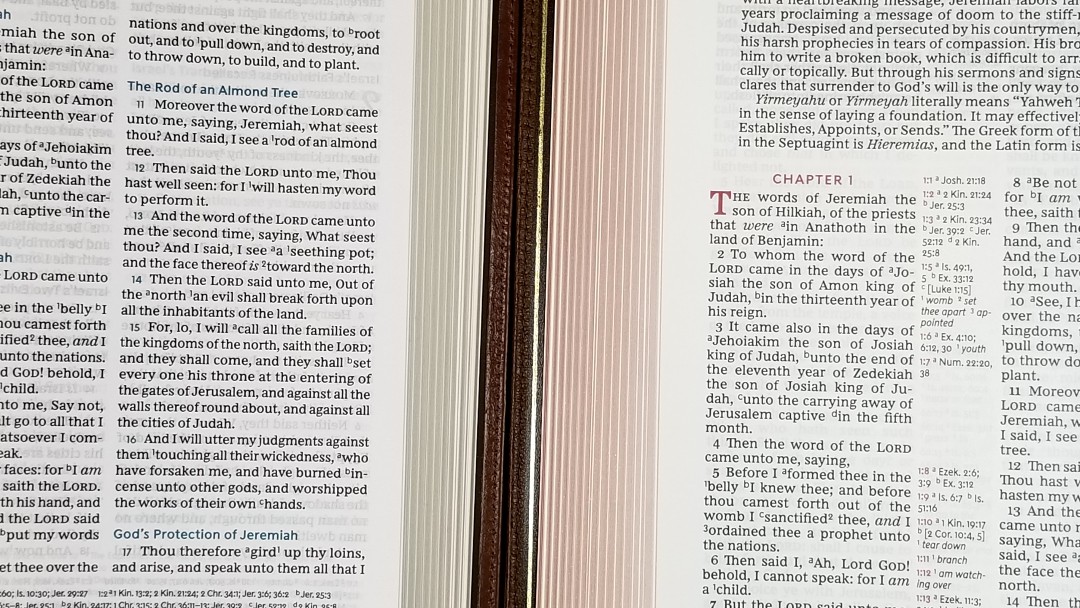


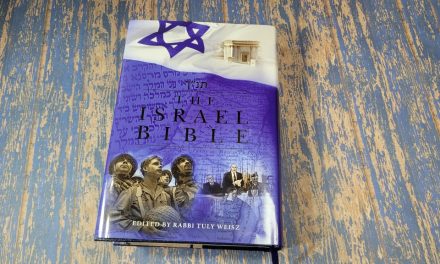


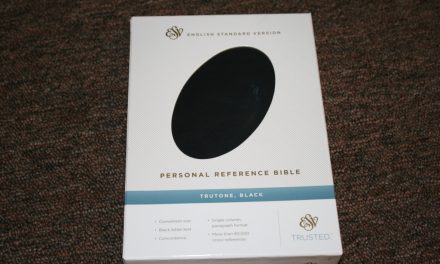






Excellent review I was on the fence until I saw this I intend to order this one to ad to what the Lord only knows how many King James I already have.
Are the outside margins enough for reference notes, in your opinion?
I think I could only get one word across. It might work for a reference or a small symbol. For a sentence, the words would have to be stacked or written sideways.